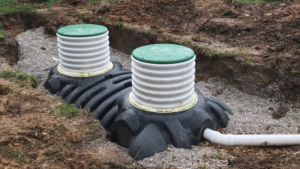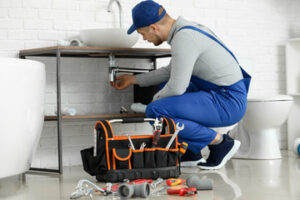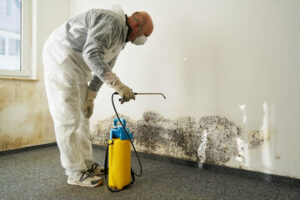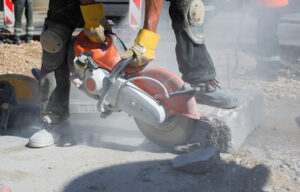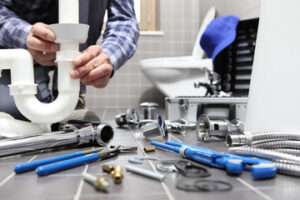Perth Insulation improves comfort and energy efficiency, reducing monthly energy bills. It is available in various types and materials to suit different climates and needs.
Keeping warm requires insulation that limits heat transfer. Cats fluff up their fur, and birds wrap themselves in layers of feathers to trap air and reduce the flow of heat energy.

Insulation inhibits the migration of thermal energy into and out of a building, saving money on heating and cooling costs. It is a key part of energy conservation and helps reduce emissions that contribute to global warming. Insulation is also useful for reducing noise levels.
Insulating material is generally made of fibrous materials such as fiberglass, rock wool, cellulose, and natural fibers. These are used for both thermal and acoustic insulation. Foam-type insulators are also common and can be injected into walls, ceilings, and roof cavities to provide excellent thermal and acoustic insulation.
The thermal insulating properties of insulation are measured by its resistance to conductive heat flow (R-Value). A higher R-value means greater insulating efficiency, which is affected by the size and thickness of the insulating material and the air spaces within it. An insulation product is effectiveness also depends on the climate and the installation method.
Conductive heat loss is the most significant way a home loses heat. It is caused by differences in temperature between internal and external areas. The temperature difference is due to a combination of convection, radiation, and conduction. Insulation reduces the rate of conductive heat flow by slowing down the transfer of thermal energy and trapping air in its layers.
Radiation is another major cause of heat loss and it is the process by which hot surfaces radiate heat. This can be felt as you hold a warm cup of coffee, or when sunlight warms your skin. Insulation can reduce the amount of radiant heat that escapes from a living space, as well as reflecting existing radiant heat inside the home.
Insulation can also be utilised to prevent air leaks in the building envelope, which can allow cold air into the home and warm air out. Air leakage can be reduced by installing insulation around door and window frames, as well as by sealing any gaps or cracks. Some insulation products also have reflective surfaces that can help to further reduce radiant heat loss.
Insulation reduces the need for heating and cooling, allowing a building to stay at a more stable temperature, which in turn reduces the mechanical stresses placed on equipment. This can extend the life of equipment and reduce maintenance and operating costs, as well as lowering energy consumption and environmental impact.
Prevents Draughts
Insulation can prevent unwanted draughts in your home, especially during cold weather. Draughts often come through gaps and cracks around doors, windows, exhaust fans and fireplaces. Draught proofing stops warm air escaping from your home in winter and hot air entering in summer, saving energy. Insulation can also help to reduce the noise caused by draughts, making your home more comfortable.
Depending on the type of insulation you choose, it may also act as a fire retardant, helping to protect your family from fire damage in the event of a fire in your home. It can also help to protect the integrity of your roof and walls by acting as a barrier against moisture, which can cause mould and other structural problems in your home. This is particularly important for older homes, which can often have serious issues with condensation and water leaks that will lead to costly repairs in the future.
Ceiling insulation is an effective way to reduce heat loss from your home. During construction, insulation can be installed between the ceiling joists to provide an effective thermal barrier. It can also be retrofitted to existing homes by installing insulation in the ceiling space. Insulation can also be used to create an energy efficient wall by sealing gaps between framing in new construction or by stapling a blanket to the outside of existing walls.
When you use less energy in your home, it saves money and reduces greenhouse gas emissions. This is because the energy that is saved is not produced by burning fossil fuels, which causes pollution. Insulation can also be used to help improve the performance of pollution control equipment in commercial buildings.
A well-insulated home is more comfortable and cheaper to run than an uninsulated one. It can also help to improve indoor air quality (IAQ), which could reduce respiratory issues and allergies and increase productivity in work spaces. Additionally, insulation can protect your home against external pollutants and allergens such as dust mites, fungi and radon.
Reduces Moisture
Moisture is a leading cause of mold and other damage to building materials, and it can also contribute to rot and the growth of pests. Insulation plays a critical role in moisture control, both in preventing condensation and helping dry out the building quickly if it gets wet. The hygroscopic properties of some types of insulation, such as mineral wool and cellulose, can even help control indoor humidity levels by absorbing moisture before it reaches the dew point.
Insulation can help reduce the amount of moisture that enters a home or building, and this is important because high levels of humidity make it feel hotter in the space, forcing people to use air conditioning more frequently, which can drive up energy bills. Additionally, moisture in a home or building can damage materials, such as wood framing, and encourage the growth of toxic molds.
To prevent this, a good insulation should have a high vapor retardance rating. In addition to a well-functioning vapor barrier, other measures that can be used to control moisture in a home or building include ensuring that water drains away from the foundation, using a waterproof membrane between the foundation and sill plate, and providing proper ventilation.
Another way that insulation helps prevent moisture problems is by providing a barrier against air leaks, which can allow water to penetrate the structure and cause damage. This is why it’s important to use a professional when installing insulation in a new home or building.
Insulation can also be one of the most sustainable construction products available, particularly when it’s made from recycled paper. The manufacturing process of cellulose thermal insulation, for example, uses significantly less energy than most other major insulation products. This is because cellulose is made from paper products that are reduced to a pulp, then fiberized and densified before being blown into place.
The resulting insulation is highly fire-resistant and can be treated with boric acid to further increase its durability. For further peace of mind, it’s worth considering a contractor that is ABAA certified and can provide a comprehensive air sealing and insulation service, which will improve the results of your investment.
Reduces Noise
As well as keeping your home climate-controlled, insulation acts as an effective barrier that blocks out unwanted noise. It helps create a quieter environment, allowing you and your family to focus on work, relaxation and other activities without distraction. Insulation can also reduce the effects of noise pollution caused by neighbours, traffic and other sources outside your property.
Insulation is an excellent soundproofing solution, particularly in multi-level homes, apartments and townhouses where the walls are shared with other residents. It reduces the amount of external noise that penetrates into living areas and bedrooms, allowing people to enjoy a more restful sleep.
The way in which insulation reduces noise depends on the type of material and its thickness and density. Some insulation materials such as cellulose and fiberglass are able to absorb sound waves by dampening or dissipating their energy, thus reducing their intensity and the level of noise pollution. Other insulation materials such as concrete, brick or gypsum board are effective at blocking noise waves by creating a physical barrier that stops them from passing through walls or ceilings.
Choosing the right type of insulation for your home depends on the type of sound you want to reduce, its frequency and intensity, as well as costs and space limitations. For example, solutions that absorb sound are ideal for reducing airborne noise such as music, television or loud talking, while those that block sound are best suited to basements or other spaces in the home where you would like to decrease impact noise from upstairs neighbors or mechanical equipment.
Insulation for sound reduction is an investment that not only improves comfort and wellbeing in your home but can also add value if you’re considering selling your home in the future. If you’re interested in enhancing your property with quality insulation that prevents heat loss, prevents draughts and reduces moisture, contact Koala Insulation of The Space Coast today for a free, no-obligation quote. We can assist with a range of insulation solutions for your home, including wall and ceiling insulation. We can even advise on other energy efficiency measures you may want to consider.
